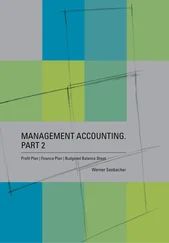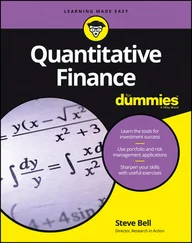Stuart Warner - Finance Basics
Здесь есть возможность читать онлайн «Stuart Warner - Finance Basics» — ознакомительный отрывок электронной книги совершенно бесплатно, а после прочтения отрывка купить полную версию. В некоторых случаях можно слушать аудио, скачать через торрент в формате fb2 и присутствует краткое содержание. Жанр: unrecognised, на английском языке. Описание произведения, (предисловие) а так же отзывы посетителей доступны на портале библиотеки ЛибКат.
- Название:Finance Basics
- Автор:
- Жанр:
- Год:неизвестен
- ISBN:нет данных
- Рейтинг книги:3 / 5. Голосов: 1
-
Избранное:Добавить в избранное
- Отзывы:
-
Ваша оценка:
- 60
- 1
- 2
- 3
- 4
- 5
Finance Basics: краткое содержание, описание и аннотация
Предлагаем к чтению аннотацию, описание, краткое содержание или предисловие (зависит от того, что написал сам автор книги «Finance Basics»). Если вы не нашли необходимую информацию о книге — напишите в комментариях, мы постараемся отыскать её.
Finance Basics — читать онлайн ознакомительный отрывок
Ниже представлен текст книги, разбитый по страницам. Система сохранения места последней прочитанной страницы, позволяет с удобством читать онлайн бесплатно книгу «Finance Basics», без необходимости каждый раз заново искать на чём Вы остановились. Поставьте закладку, и сможете в любой момент перейти на страницу, на которой закончили чтение.
Интервал:
Закладка:
2.1 Make sense of the jargon
Those new to finance can take a while to get used to the terminology used by accountants. Here are some of the common terms used. You can also refer to the ‘jargon buster’ at the back of the book at any time.
Financial statements and accounting principles
Financial statements. The collection of formal financial records of a business’s activity (namely the balance sheet, income statement, statement of recognized income and expense, and statement of cash flows).
Matching (or accruals) concept. Costs are accounted for when incurred, and income when earned.
Going concern. An assumption that the business will continue in operation for the foreseeable future, which provides the basis for the valuation of business assets.
Prudence. Revenues and profits should only be recognized once their realization is reasonably certain. Conversely, liabilities are accounted for when they are foreseen.
Materiality. Amount above which an item’s omission or mis-statement would affect the view taken by a reasonable user of financial statements.
“People want to learn about finance because they want to know what accountants are talking about” Anonymous
Revenue, capital and assets
Asset. An item of value owned or controlled by a business that will generate a future benefit. Examples include buildings and inventory.
Capital expenditure. Payments to purchase or improve long-term assets such as property and equipment.
Revenue expenditure. Expenses incurred in running a business, which do not specifically increase the value of long-term assets.
Receivables (debtors). Amounts owed by customers paying on credit.
Prepayment. A payment for goods or services before they have been received. Examples include advance payment of insurance and rent.
Liabilities
Liability. Money owed by a business. A commitment to transfer economic benefit in the future. Examples include payables and loans.
Payables (or creditors). Amounts owed to suppliers who have offered credit.
Accrual. Goods or services received but not yet invoiced by the supplier. Examples include certain goods for resale and utility bills.
Provision. An amount set aside for a known liability whose extent and timing cannot be precisely determined, e.g. restructuring costs.
Contingent liability. A liability where the amount and/or likelihood of payment are uncertain. As such, no specific provision is made.
Be aware of common financial terms.
2.2 Discover why timing is essential
The timing of cash receipts and payments may not be the same as the sales and purchases recorded in financial statements. At the end of an accounting period, a business should make sure that everything has been accounted for, when it should be accounted for.
The importance of timing. Imagine you are shopping in January and make all your purchases using a credit card. Although, you’ve effectively ‘spent’ money (or ‘incurred’ expenditure) in January, you won’t actually pay any cash until you pay your credit card bill, perhaps during February. Therefore, the cash cost of the shopping in January is zero.
case studyAaron, a salesperson, would argue that he has made a sale when his customer has placed an order. Helena, a lawyer, would argue that she has made a sale when her client signs a contract. Others may argue it’s when goods are delivered, a service is performed, or a customer has paid. However, using the matching concept, Brian, the accountant who works for Aaron, Helena and other businesses, only recognizes a sale when it has been ‘earned’. Similarly, Brian recognizes a purchase made by Aaron and Helena only when their suppliers have ‘earned’ the revenue, not when an order is placed, a contract signed, goods received, or a payment made. Revenue and expense recognition is a complex area for Brian.
Now using a business example – imagine a credit sale made in March, where the customer pays in cash during April. Although the business has effectively ‘earned’ a sale in March, the cash receipts from that customer during March are zero.
These examples highlight the importance of timing in accounting. Expenses can be incurred at different times to the associated cash paid. Likewise, income can be earned at different times to the associated cash received.
The matching (or accruals) concept. Financial statements ‘match’ income and expenses to the periods in which they are earned and incurred to show a true and fair view to the users of those statements. This concept is a fundamental accounting concept used by the majority of businesses.
The benefits. Matching income and expenditure to the periods in which they are earned and incurred enables more accurate and realistic performance measurement. Ultimately this leads to more efficient business management. The timing of cash receipts and payments is still important and businesses will monitor this separately.
Costs are accounted for when incurred and income when earned, as opposed to when cash is received or paid.
2.3 Know about doubleentry bookkeeping
Accountants use an established system of recording financial transactions, called double entry bookkeeping. The globally used system has hardly changed since it was developed in 1494 by Renaissance scholar Luca Pacioli.
Pacioli’s principle is that every transaction has a dual effect. For example, if you get paid for work, then the first effect is that you’ve earned income and the second effect is that you now have more money. If you go clothes shopping, the first effect is that you have more clothes. The second, more unfortunate effect, is that you have less money.
case studyBe careful not to confuse the words ‘debit’ and ‘credit’. For Brian and other accountants, a ‘debit’ represents an asset and a ‘credit’ a liability. A ‘debit’ will increase the value of an asset and a ‘credit’ will reduce its value. For example, a bank receipt, which increases cash (and hence is a business asset) is a debit. Similarly, a bank payment, which reduces cash, is a credit. This is the opposite way around for banks. For example: The Little Socks Company has $1,000 in the bank and therefore has an asset of $1,000 which is a ‘debit’ in The Little Socks accounts. The bank holds the $1,000 but owes it back to The Little Socks, as it is not the bank’s money. The bank has a liability to The Little Socks of $1,000 which is therefore a ‘credit’ in the bank’s accounts. The bank tells The Little Socks: “You are in credit for $1,000”.
“Never call an accountant a credit to his profession; a good accountant is a debit to his profession”
Sir Charles Lyell, British lawyer and geologist
Likewise, when a business makes a purchase, it (i) incurs an expense and (ii) has less cash. Similarly, when it makes a cash sale it has (i) more income and (ii) more cash. The system is called double entry bookkeeping because every transaction is effectively recorded twice.
Debits and credits. The two equal and corresponding effects (recordings) of each transaction are termed ‘debits’ and ‘credits’. As this rule is consistently applied, the total amount of debits will always equal the total amount of credits. As such, accounts should always balance.
Конец ознакомительного фрагмента.
Текст предоставлен ООО «ЛитРес».
Прочитайте эту книгу целиком, купив полную легальную версию на ЛитРес.
Читать дальшеИнтервал:
Закладка:
Похожие книги на «Finance Basics»
Представляем Вашему вниманию похожие книги на «Finance Basics» списком для выбора. Мы отобрали схожую по названию и смыслу литературу в надежде предоставить читателям больше вариантов отыскать новые, интересные, ещё непрочитанные произведения.
Обсуждение, отзывы о книге «Finance Basics» и просто собственные мнения читателей. Оставьте ваши комментарии, напишите, что Вы думаете о произведении, его смысле или главных героях. Укажите что конкретно понравилось, а что нет, и почему Вы так считаете.












